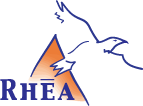
Competent, efficient, and accurate field work and data processing allowed for the collection of viable analytical data and the creation of contaminant trend plots, which allowed for the identification of groundwater and dust sampling trends.
Semi-annual Groundwater Sampling
Rhea was contracted to provide third-party semi-annual sampling activities at four monitoring wells and two outfalls located at a manufacturing facility in Butler, PA. In addition, Rhea assists with tabulating and graphing laboratory data generated from previous and upcoming semi-annual sampling events in order to identify contaminant trends or concerns.
The semi-annual sampling was conducted in June/July and December/January of each year. Prior to purging, the well depth and depth to water for each well were measured with a water level meter. The well volume of each well was also calculated. Each monitoring well was purged dry with a dedicated bailer and allowed to recharge prior to sampling. Sampling at each well consisted of filling one laboratory-supplied 1,000 milliliter (ml) plastic container for laboratory analysis of select metals, pH, and specific conductance. Outfall sampling was conducted by collecting grab samples in laboratory-supplied containers. Outfall samples were submitted to the laboratory for pH, total suspend solids, and iron/aluminum analysis. Appropriate personal protective equipment (nitrile gloves) were worn by Rhea personnel during sampling activities and changed between each monitoring well and outfall location to avoid cross-contamination. Following sample collection, groundwater and outfall samples containers were packed and submitted to the laboratory under chain-of-custody by Rhea. In order to identify contaminant trends, Rhea assisted with the tabulation and graphing of historical laboratory data for the monitoring wells and internal dust sampling activities. Rhea will continue to update the trend graphs following each semi-annual sampling event. Rhea also processed, tabulated, and graphed data from a two-year backlog.
Rhea successfully completed semi-annual sampling activities at four monitoring wells and two outfalls at the manufacturing facility that resulted in the collection of high-quality analytical data. Rhea incorporated the current analytical results into a two-year backlog of analytical data to create contaminant trend plots for multiple inorganic constituents and water quality parameters. Historical and current dust sampling data was also tabulated and graphed. Rhea’s deliverable to their client consisted of well specific analytical data tables and contaminant trend plots.
Services: Environmental Services
Industries: Commercial + Industrial






